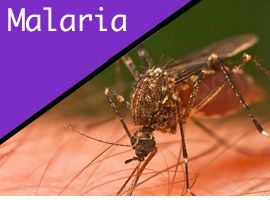Named after the area around the Hantan River in South Korea, where an outbreak was recorded in the 1970’s, hantaviruses find themselves in that fun category of viruses that are untreatable and potentially fatal. There is also no current commercially available vaccine. The good news is that hantaviruses are rarely contracted by humans. We will explain how to keep it that way.
How do you get infected with a hantavirus?
Hantaviruses are carried by rodents. They are the perfect hosts. They virus does not make them sick, so they act as reservoirs for transmission to other animals. In order for the virus to be transmitted to humans, the unlucky human has to breathe in aerosolized rodent crap. What are we talking about?
Here is an example: a mouse defecates repeatedly in one corner of your garage and you never clean it up. If you approach said mouse feces and breathe in the air immediately around it, there is a chance you can become infected with a hantavirus if the mouse is a carrier. The same goes for rodent urine and saliva.
What happens if I get infected with a hantavirus?
That all depends on the particular strain of the virus. Some hantavirus strains will not cause any illness in humans, while others can cause potentially fatal infections. The most worrisome of these possible infections are these two: hantavirus pulmonary syndrome (HPS) and hantavirus hemorrhagic fever with renal syndrome (HFRS). The former is responsible for the greatest number of fatalities when it comes to infections caused by the hantavirus. Roughly 40% of all HPS cases result in death (CDC).
hantavirus pulmonary syndrome (HPS) vs. hantavirus hemorrhagic fever with renal syndrome (HFRS)
We’ve already mentioned that HPS results in death more often than HFRS, but what are some other differences?
- HPS results in a severe, flu-like pulmonary infection while HFRS has more wide ranging symptoms. Over the course of HFRS infection, there are several stages with the most severe being possible kidney failure.
- HPS is found throughout North, Central and South America while HFRS is present in Europe and Asia. In the United States, most cases of HPS are concentrated in the southwest, while in Europe cases of HFRS are mostly found in non-Mediterranean countries.
- Both infections are caused by breathing in air that has been contaminated with a rodent’s excrement.
Alright, let’s talk about what’s most important: how to avoid any and all hantavirus strains.
How to avoid hantavirus infection
It’s quite simple: don’t breathe in mouse poop. Easy enough? If not, here are a few more tips:
– While there is research ongoing, there is no vaccine at the moment. This means that the only preventative measure available to us is to avoid contact with rodents.
– Keep your lodging clean. If you are traveling in rural areas, choose your accommodation wisely. Make sure there are no rodent nests in or around where you are staying.
– If you are planning on hiking or camping, look at the local news for the area and see if there have been any recent hantavirus cases. For example, in 2012 there were several cases at Yosemite National Park.
– The hantavirus cannot survive in sunlight. However, the virus loves dark and damp areas. Keep this in mind when you are cleaning out the shed behind your house.
Is there any treatment available for hantavirus infections?
Unfortunately, there is not any treatment available outside of supportive care.
For cases of HFRS infection, renal dialysis is often used as an important element of supportive care. In cases of HPS, supplemental oxygen and mechanical ventilation may be required if the infection reaches a stage of respiratory failure. Of course, the chances of survival are greatly reduced in individuals that already have certain health conditions.
If you have any familiarity with any of the hantavirus strains, please let us know in the comments below.












{ 1 comment… add one }